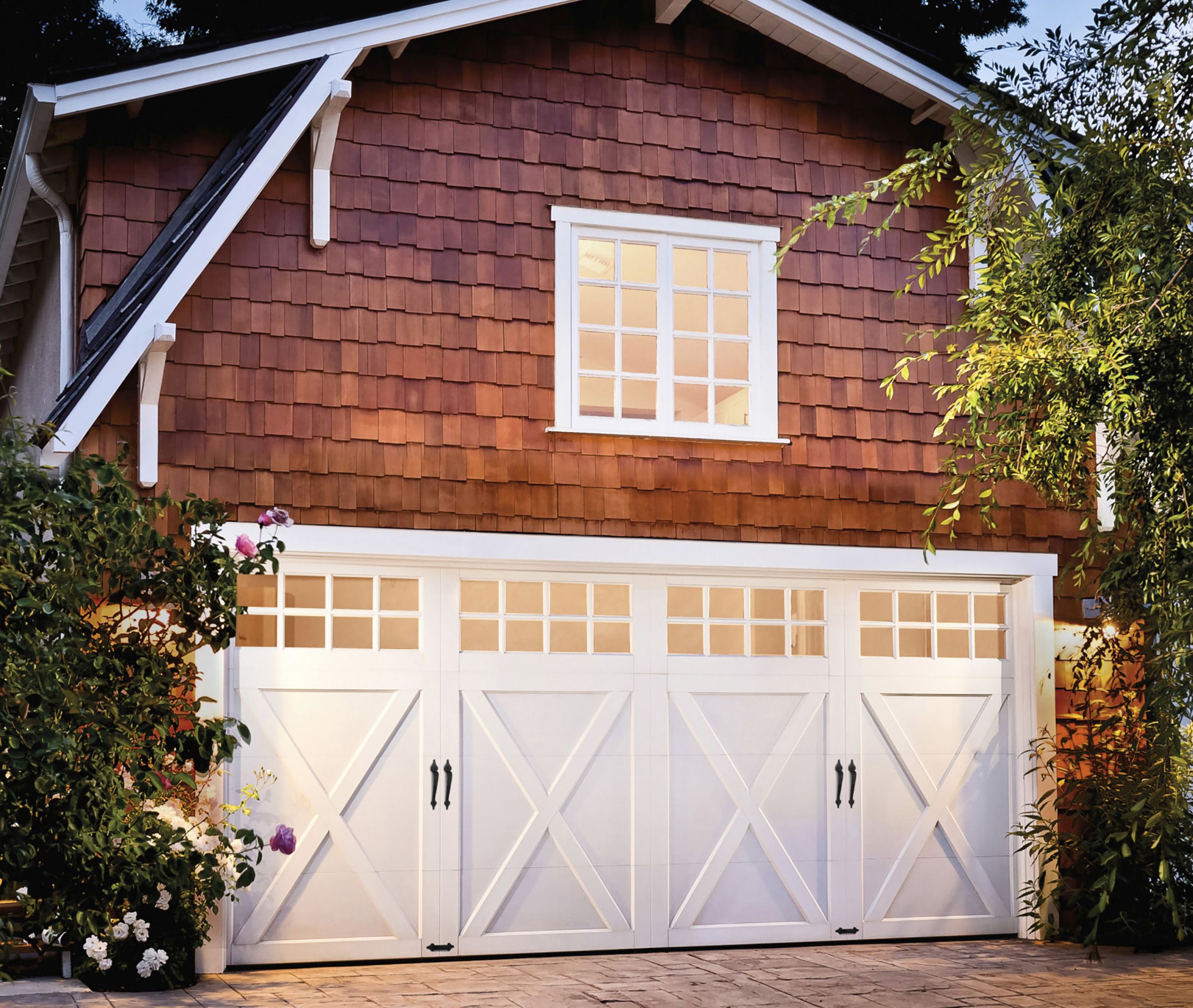
This article appeared in the Spring 2021 issue of This Old House Magazine.
Upgrading your garage door can boost your home’s curb appeal, energy efficiency, and functionality. Modern garage doors offer improved insulation, quieter operation, and a wide range of design options to complement any architectural style. Whether you’re looking to replace an aging door or simply want to give your home a facelift, we’ll walk you through how to complete this project.
Why Consider a Garage Door Upgrade
Not only does a new garage door look great, many modern options have enhanced insulation to help regulate temperatures in your garage and adjacent living spaces, lowering your energy bills.
Newer garage doors are also designed with improved safety features and require less maintenance than older models. They often come with safer spring systems and quieter operation, making them more convenient for daily use. Garage doors are the primary entry point to most people’s homes, so upgrading to a more reliable and secure door can provide peace of mind and enhance your daily routine.
Signs It’s Time To Replace Your Garage Door
Knowing when to replace your garage door is crucial for maintaining your home’s safety, functionality, and appearance. Several telltale signs can indicate it’s time for an upgrade:
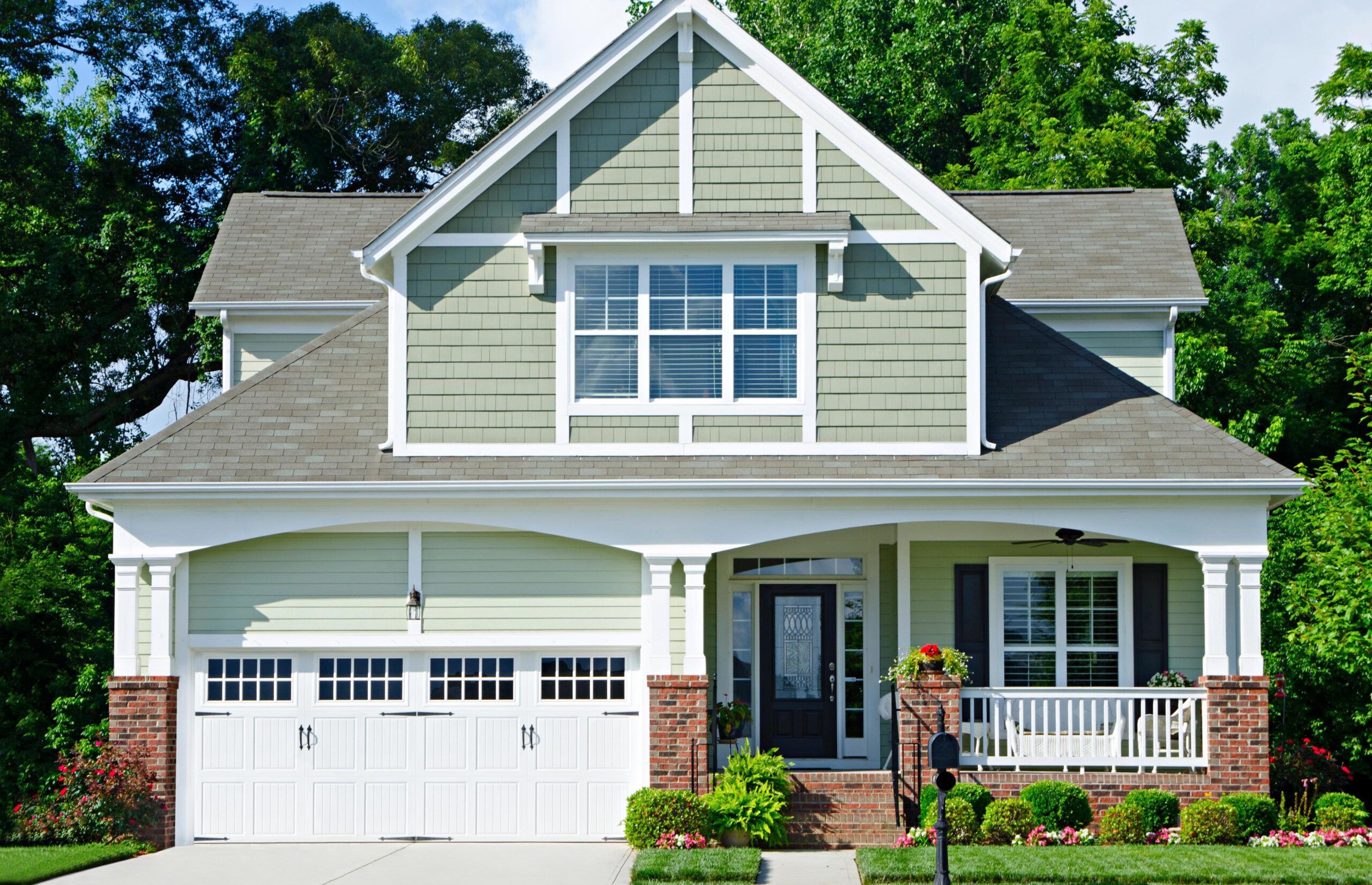
- Visible damage or deterioration: If your door shows signs of rot, rust, or significant dents, it may be time for a replacement. As Tom Silva, General Contractor, notes, “If a garage door shows signs of rot or deterioration, if it has started absorbing moisture, or the steel frame or track is bent or rusted and the door isn’t sealing out the weather anymore, it’s time for a new one. “
- Poor insulation: If you notice drafts or temperature fluctuations in your garage, your door may lack proper insulation. This is especially important if you live in hotter or colder climates where poor insulation in one area of your home can affect temperatures in adjacent rooms.
- Noisy operation: Excessive noise during operation can indicate worn-out components that may be beyond repair.
- Frequent repairs: If you frequently need to repair parts of your garage door, this may seem like a more economical option. However, a new garage door with today’s engineering could last up to 50 years, making it a worthwhile long-term investment.
- Outdated style: An old, worn-out garage door can significantly detract from your home’s aesthetic, while upgrading to a more modern style can refresh its exterior.
Types of Garage Doors
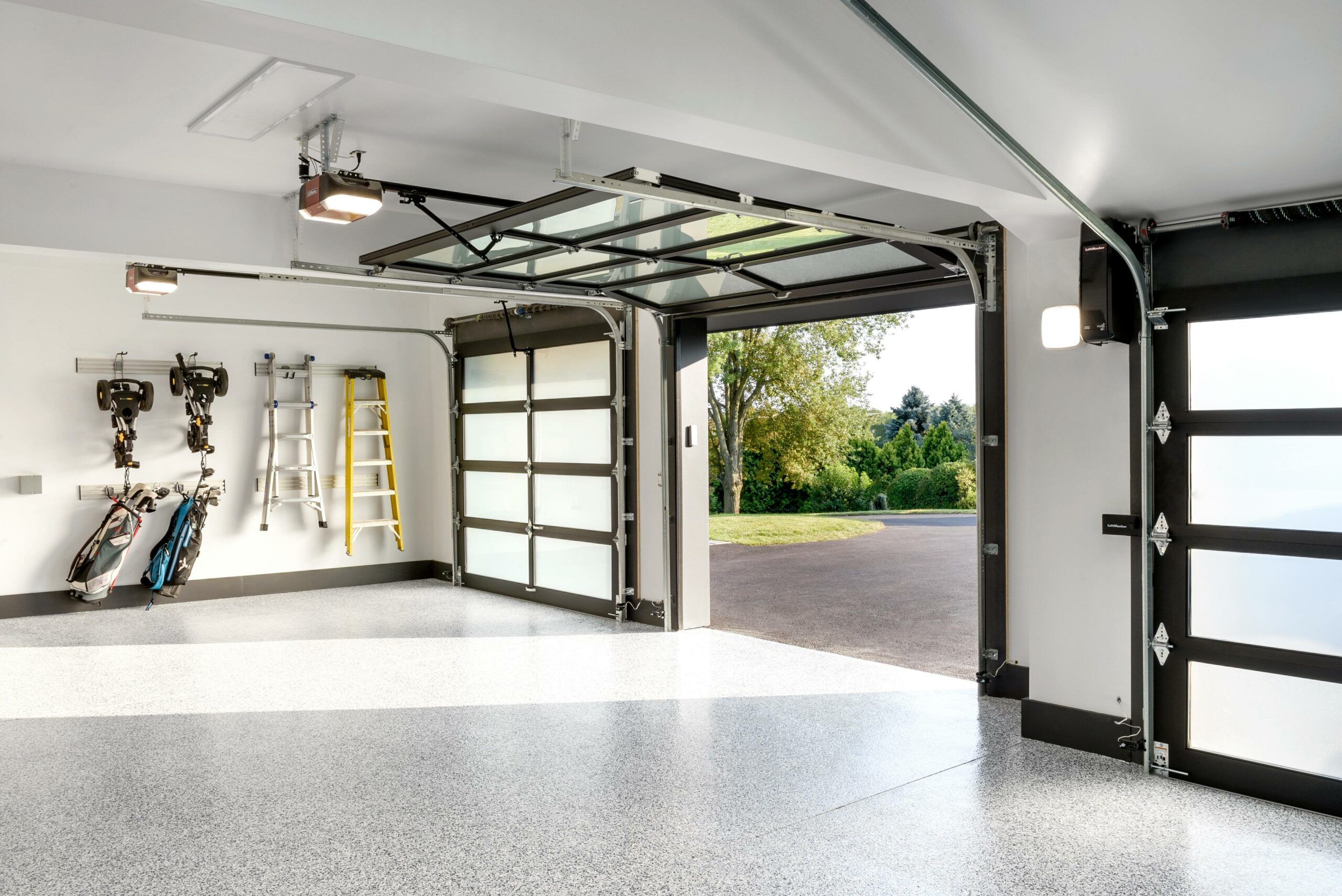
When upgrading your garage door, it’s important to understand the different types available. Sectional, roll-up, and carriage house doors are the most common styles, each offering unique benefits and matching various architectural designs.
Sectional Doors
Sectional doors are the most popular type of garage door in most homes. They consist of panel sections connected with hinges, which roll up on tracks using rollers installed on the garage ceiling. These doors are versatile, space-efficient, and can be customized with various panel designs and window options. They are ideal for most garage openings and offer good insulation properties.
Roll-Up Doors
Roll-up doors, also called coiling doors, are more commonly used in commercial settings but are gaining popularity across residences, particularly in homes with lower ceilings or larger vehicles. These doors have narrow slats that roll around a drum above the door opening. Roll-up doors are durable, secure, and take up minimal space when open.
Carriage House Doors
Carriage house doors mimic the look of traditional swing-out barn doors but operate like modern sectional doors. They add a charming and rustic aesthetic to, most commonly, craftsman, farmhouse, and colonial-style homes. Many manufacturers offer carriage house-style doors with modern materials like steel or composite, providing a classic look without the maintenance requirements of wood.
Material Options for Garage Doors
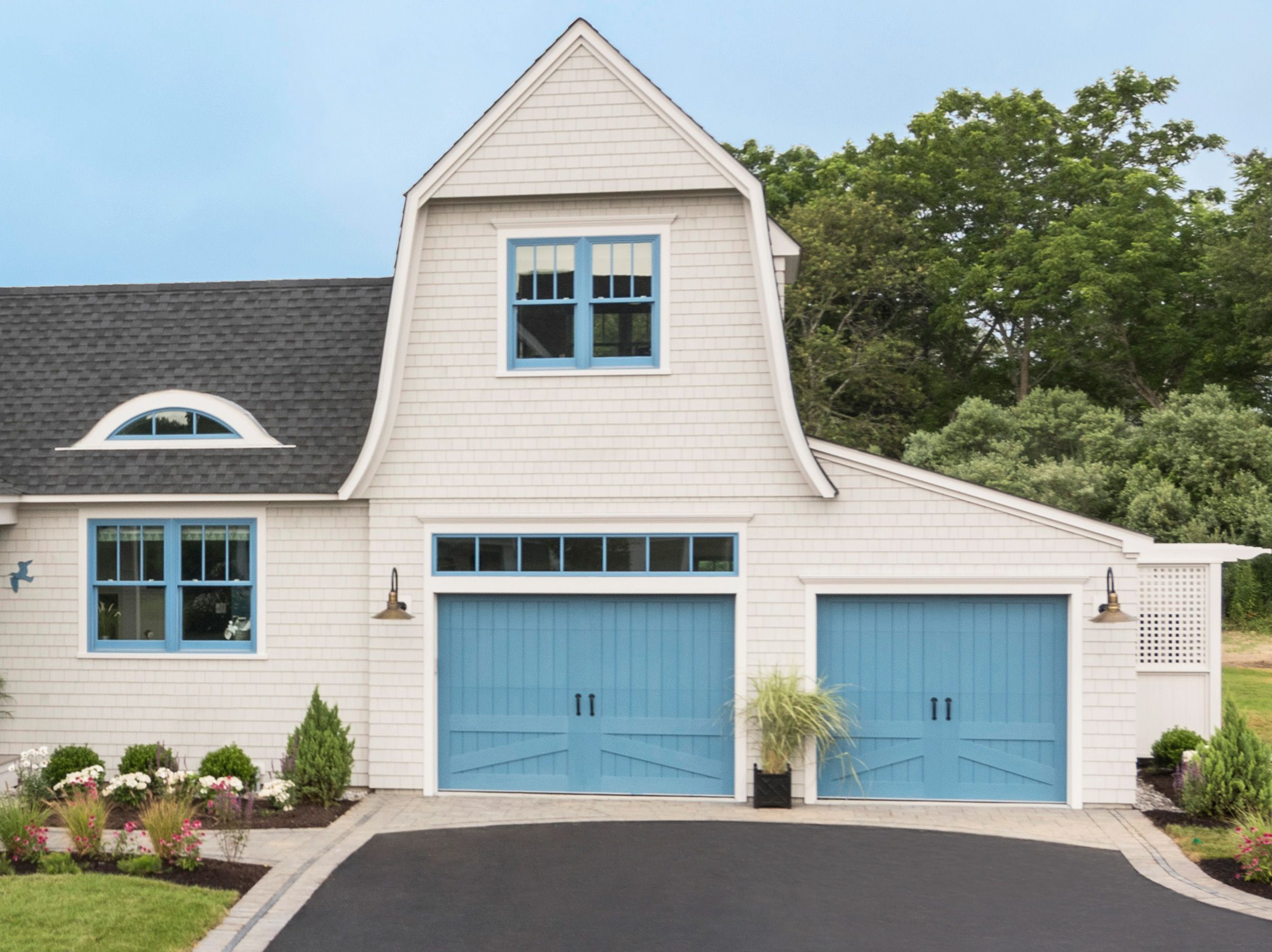
The material you choose for your garage door affects its durability, maintenance requirements, insulation properties, and overall appearance. Below, you’ll find common materials used in most modern garage doors:
Steel Doors
Steel is the most popular material for garage doors due to its strength, durability, and relatively low cost. Steel doors can be insulated, are low-maintenance, and come in various styles and colors. They can even be textured to mimic the look of wood. While they can dent if hit with force, many steel doors are now made with multiple layers for added strength.
Wood Doors
Wood garage doors offer a classic, high-end look that’s hard to replicate with other materials. They can be customized with various wood species, stains, and paint colors. However, wood doors require more maintenance to prevent warping, rotting, and insect damage. They’re also typically more expensive than other options.
Fiberglass Doors
Fiberglass doors are lightweight, resistant to salt-air corrosion, and can be made to look like wood. They’re a good choice for coastal areas as they can withstand harsher environments. Fiberglass doors can be insulated and are relatively low-maintenance, though they may become brittle in extremely cold climates.
Aluminum Doors
Aluminum doors are lightweight and resistant to rust and are most often used in modern or contemporary home designs, especially when combined with glass panels for a sleek look. While not as insulating as steel, aluminum doors can be constructed with foam insulation if you live in colder climates.
Energy Efficiency Considerations
Energy efficiency is crucial when upgrading your garage door, especially if your garage is attached to your home or you use it as a living or working space. A well-insulated garage door can help maintain comfortable temperatures and reduce energy costs.
The insulation value of a garage door is measured by its R-value, with higher numbers indicating better insulation. Depending on the door’s construction, some can offer R-values up to 18 or higher.
When considering insulation, look at the door’s construction:
- Single-layer doors are typically uninsulated and offer minimal temperature control.
- Double-layer doors have insulation added to the interior side of the door panel.
- Triple-layer doors sandwich insulation between two steel panels, providing the best insulation and energy efficiency.
In addition to insulation, weather stripping around the door frame and a properly sealed bottom edge work to prevent air leaks, further improving energy efficiency.
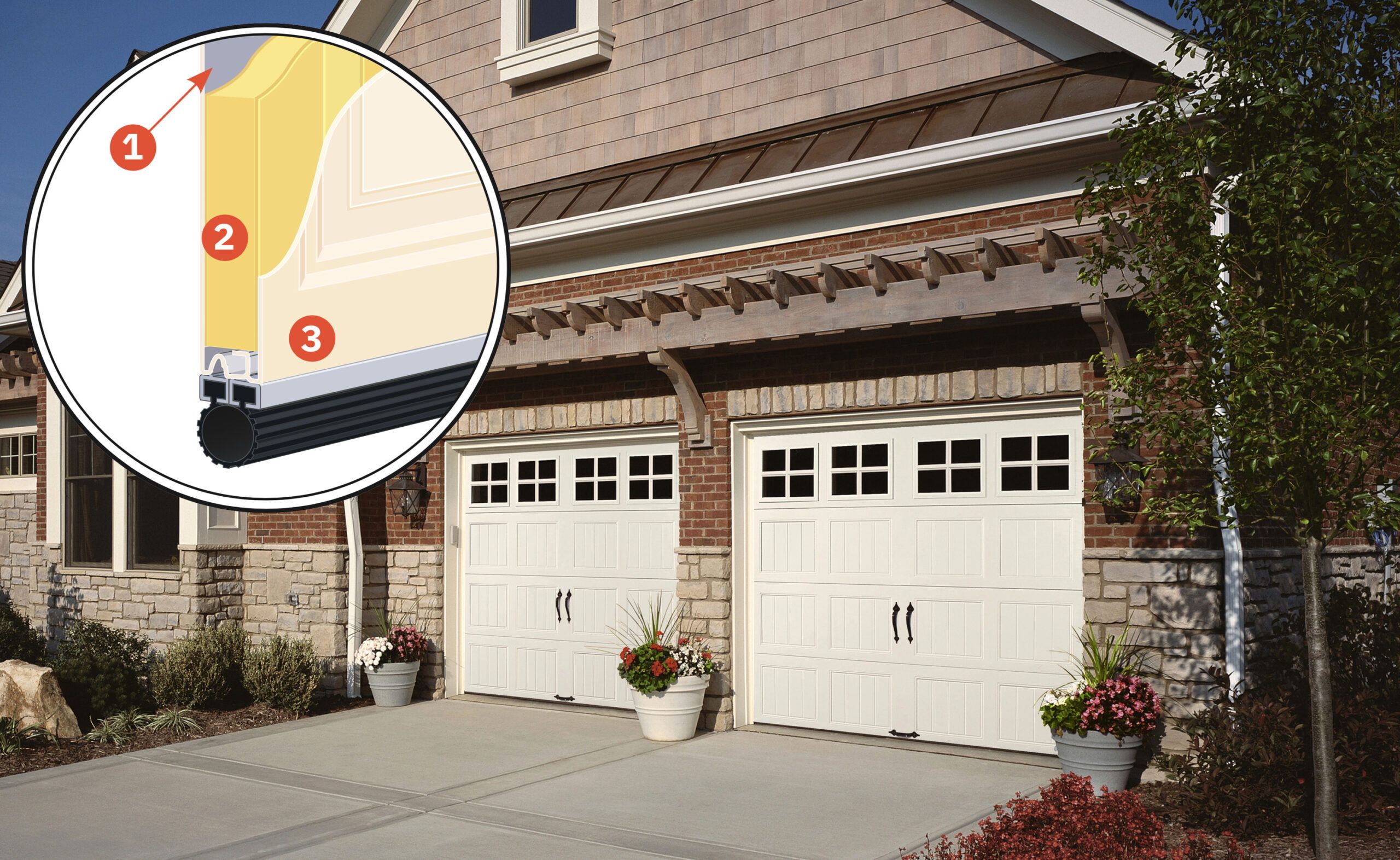
Smart Garage Door Features
Modern garage doors can be equipped with smart features that enhance convenience, security, and functionality. These technological advancements can also improve the integration of your garage door with your home’s overall smart system.
Wi-Fi Connectivity
Wi-Fi-enabled garage door openers allow you to control and monitor your garage door from anywhere using a smartphone app. This feature is useful for checking if you’ve left the door open or allowing temporary access to service providers or guests when you’re not home.
Security Cameras
Some smart garage door systems include integrated security cameras. These let you see who’s entering or leaving your garage in real time, adding an extra layer of security to your home. Many systems also alert your phone when motion is detected, or the door is opened.
Smartphone Integration
Smart garage door openers can often be integrated with other smart home devices like Amazon Alexa or Google Assistant. This allows for voice-controlled operation and automated routines. For example, you could set your garage door to automatically close at a certain time or have your home’s lights turn on when the garage door opens in the evening.
Additional smart features may include:
- Battery backup for operation during power outages
- Geofencing technology that automatically opens the door as you approach
- Energy-efficient LED lighting that activates when the door is opened
- Maintenance alerts to notify you when service is needed
If you’re interested in smart features, the most important thing is to check that your home’s Wi-Fi signal is strong enough in the garage area. If not, a Wi-Fi extender may be necessary to establish a reliable connection.
The Garage Door Installation Process
Installing a new garage door is a complex process that’s best left to professionals. Understanding the steps involved can help you prepare for the installation and ensure a smooth process for maintenance and installation workers.
Measuring Your Garage Opening
Accurate measurements are crucial for a proper fit. While stock doors are available in standard sizes, many homes, especially older ones, may require custom sizing. Measure the width and height of the door opening and the headroom (space above the door), side room, and backroom (distance from the door to the back wall of the garage).
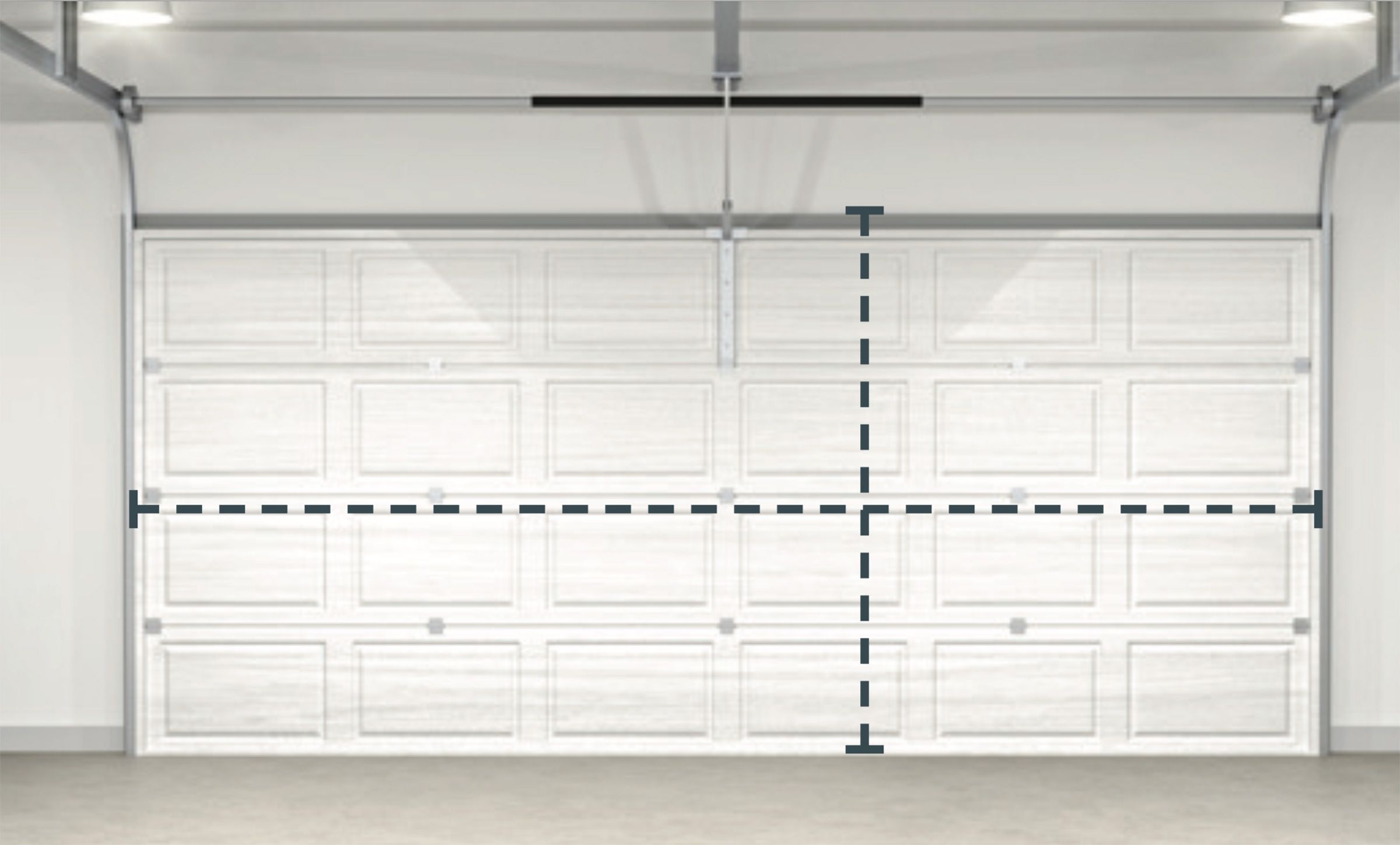
Choosing a Professional Installer
Select a reputable installer with experience and good reviews. Many garage door manufacturers have networks of certified installers. When getting quotes, ask about:
- The installer’s experience and certifications
- Warranty coverage for both the door and installation
- Removal and disposal of the old door
- Estimated time for completion
What To Expect During Installation
The installation process typically includes:
- Removing the old door and track system
- Installing the new track system and torsion spring
- Hanging the new door panels
- Installing the new garage door opener (if applicable)
- Testing and adjusting the door for proper balance and operation
- Explaining the door’s operation and maintenance to you
Installation usually takes a day for a standard single or double garage door. Custom or complex installations may take longer.
Garage Door Opener Options
Choosing the right garage door opener is crucial for your new door’s smooth operation and longevity. The main types of garage door openers are chain drive, belt drive, and direct drive openers:
Chain Drive Openers
Chain drive openers are the most common and typically the most affordable option. They use a metal chain to move the door up and down. While durable and reliable, they can be noisy, which may be a concern if you have a living space above or adjacent to the garage.
Belt Drive Openers
Belt drive openers use a reinforced belt instead of a chain. They’re significantly quieter than chain drives, making them ideal for attached garages or homes where noise is a concern. They’re generally more expensive than chain drives but offer smoother operation.
Direct Drive Openers
Direct drive openers, or jackshaft openers, are mounted on the wall beside the garage door rather than on the ceiling. The motor directly rotates the torsion bar to open and close the door. These are the quietest option and save ceiling space, but they’re typically the most expensive.
When selecting an opener, it should match your new door’s weight and size. Your installer can help you choose the best option for your specific needs and decide on features such as:
- Horsepower: Heavier doors require more powerful openers. A 1/2 HP motor is usually sufficient for standard single doors. Double doors or heavier wood doors may need 3/4 to 1 HP.
- Smart features: Many modern openers offer Wi-Fi connectivity, allowing you to control and monitor your garage door from your smartphone.
- Safety features: Look for openers with auto-reverse mechanisms and infrared sensors to prevent the door from closing on objects or people.
- Battery backup: This feature allows the opener to work during power outages.
Customization and Design Elements
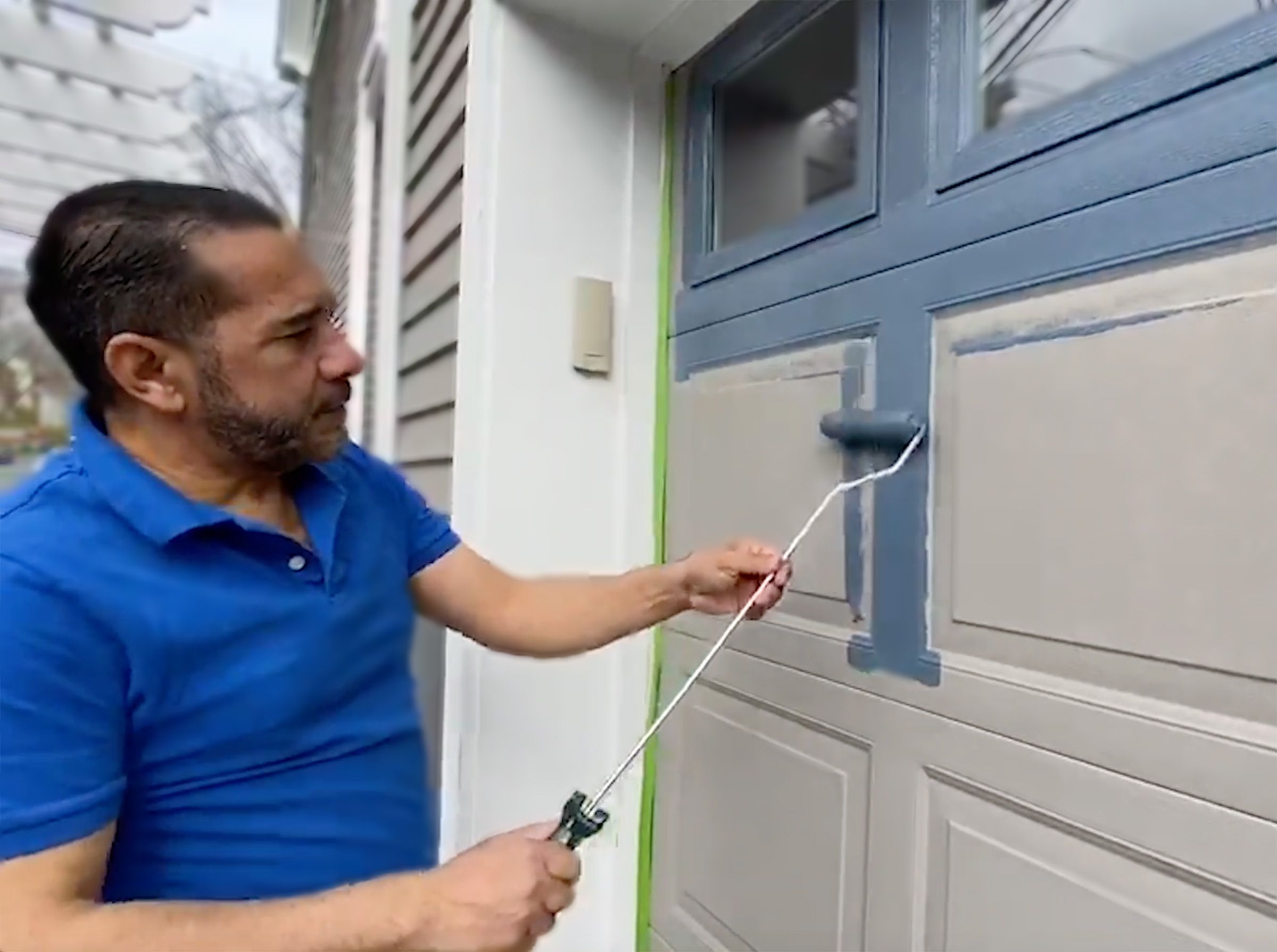
Customizing your garage door allows you to create a unique look that complements your home’s architecture and reflects your style. Many manufacturers offer various design options to help you achieve the perfect look.
Windows and Glass Panels
Adding windows to your garage door can dramatically enhance its appearance and allow natural light into your garage. Options include:
- Traditional rectangular windows
- Arched or round-top windows
- Frosted or textured glass for privacy
- Decorative grilles or mullions
- Full-view glass panels for a modern look
When selecting windows, consider their placement, style, and how they complement your home’s other windows.
Decorative Hardware
Decorative hardware can add character and authenticity, especially to carriage house-style doors. Options include:
- Handles and pull handles
- Hinges and straps
- Clavos (decorative nails)
- Corner brackets
For a cohesive look, choose hardware that matches other exterior elements of your home, such as light fixtures or door handles.
Color and Finish Choices
The color of your garage door can significantly impact your home’s overall appearance. Options include:
- Solid colors to match or complement your home’s exterior
- Wood-grain finishes for a natural look without the maintenance of real wood
- Two-tone color schemes for added visual interest
- Custom paint colors to match your exact preferences
Remember, while customization can enhance your door’s appearance, it may also increase the cost and installation time of your new door. We suggest discussing any design preferences with your installer to understand how alterations might affect your project timeline and budget.
Maintenance Tips for Your New Garage Door
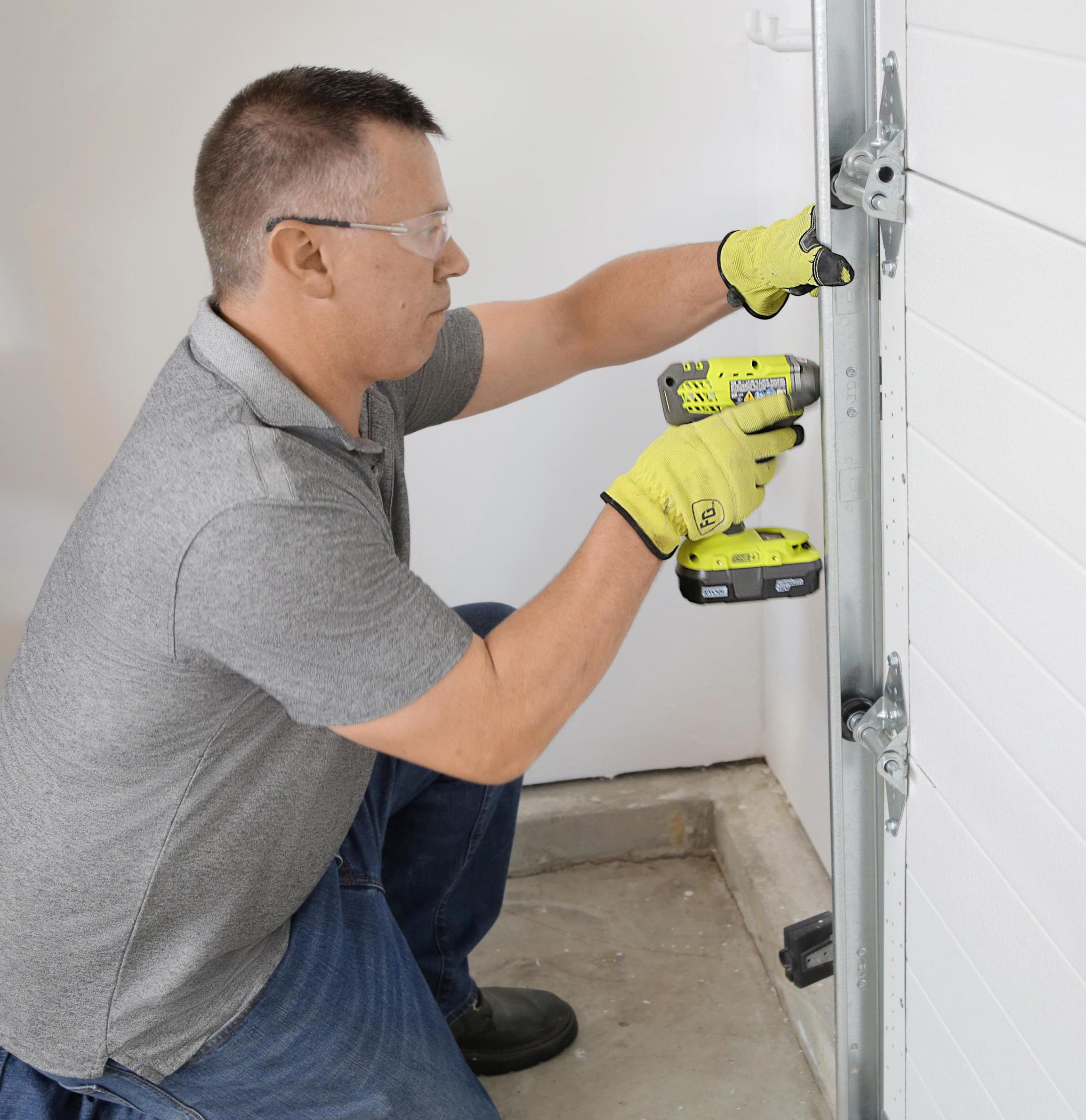
Proper maintenance is key for your new garage door’s longevity and performance. Regular upkeep can prevent costly repairs and extend the life of your investment. Here are some essential maintenance tips:
- Visual inspection: Regularly check the door, tracks, springs, and hardware for signs of wear or damage. Look for loose bolts, frayed cables, or bent tracks.
- Lubrication: Lubricate moving parts like hinges, rollers, and springs with a garage door-specific lubricant every few months to reduce friction and noise.
- Balance test: With the door closed, disconnect the opener and manually lift the door. It should lift smoothly and stay open about halfway up. If it doesn’t, the springs may need adjustment.
- Clean tracks: Keep the tracks free of debris and dirt. Wipe them down periodically with a damp cloth.
- Weather-stripping: Check and replace weather stripping as needed to maintain a good seal around the door.
- Tighten hardware: Periodically tighten loose nuts and bolts on the door and track system.
- Test safety features: Regularly test the auto-reverse mechanism and photo eye sensors.
- Professional service: Schedule annual inspections to catch and address potential issues early.
Remember, while some maintenance tasks can be done yourself, due to the high tension, any work involving springs or cables should be left to professionals.
Cost Considerations and ROI
Upgrading your garage door is a significant investment that can offer substantial returns in terms of home value, energy savings, and curb appeal. The cost of a new garage door can vary widely based on size, material, insulation, and design features.
Angi.com shares that homeowners can expect to spend an average of $1,500 to $3,000 for a new garage door, including installation. Here’s a general breakdown:
- Basic steel doors: $650–$2,000
- Mid-range insulated steel doors: $1,100–$3,200
- High-end custom wood doors: $900–$4,500
Additional costs to consider include:
- Garage door opener: $150–$400
- Removal and disposal of old door: $100–$250
- Custom sizes or features: Can significantly increase costs
A new garage door offers an excellent return on investment (ROI) despite the upfront cost. According to recent data, garage door replacement consistently ranks as one of the top home improvement projects for ROI, with homeowners recouping nearly 95% of the cost at resale.
Beyond resale value, consider the potential energy savings from an insulated door, especially if your garage is attached to your home. Improved security and reduced maintenance costs are additional long-term benefits that can offset the initial investment.
Our Conclusion
Upgrading your garage door is a significant home improvement project that offers substantial benefits in aesthetics, functionality, and home value. From enhancing curb appeal to improving energy efficiency, a new garage door can transform the look and feel of your home while providing better security and convenience.
When considering an upgrade, explore different styles, materials, and features to find the perfect fit for your home and budget. While the initial investment may seem substantial, the high ROI, potential energy savings, and improved home functionality make it a worthwhile project for many homeowners.
